Writing Teaching Resources
Teaching writing strategies and the writing process this school year? Explore a comprehensive collection of teacher resources for elementary and middle school ELA teachers — all created by teachers!
Stocked with graphic organizers, writing prompts, templates, worksheets and so much more, this collection of printable and digital activities is designed to help you as you help your students become more effective communicators and unleash their creativity and imagination.
Save time on lesson planning with resources that have been through a careful review process by an expert member of our teacher team to ensure they're ready for your classroom and your students!
Are you looking for tips and tricks to add to your teacher toolkit this school year? Read on for a primer from our teacher team, including engaging activities for teaching writing in elementary and middle school and a look at some of the different writing strategies your students will need to learn.
11 Writing Strategies Kids Should Know by the End of Middle School
We can't talk about teaching kids to write without talking about the different writing strategies that can help them do just that!
When it comes to teaching our students to become confident writers who articulate their ideas effectively, here are some of the strategies our teacher team prioritizes:
1. Brainstorming
Brainstorming is something we often do in the classroom, and it's a crucial part of learning to generate the ideas that will drive students' writing as they progress through their educational journey. Kids should know how to create a list of potential topics or points related to a particular writing assignment.
With younger students, this is often done as a whole group by writing ideas and points on chart paper. In upper grades, students transition over to using text-based materials to generate ideas and talking points.
2. Outlining
Before diving directly into any assignment, our students should be able to create a structured framework or outline. Teaching students how to create this outline will help them organize their thoughts and arguments for penning their essays, reports and research papers.

3. Using Graphic Organizers
Technically graphic organizers are classroom tools, so you may not think of their use as a writing strategy per se. However, learning to use these tools is another means of providing kids with the tools they need to organize their ideas and information before they sit down to write.
These organizers are particularly useful for expository writing — students can use them to outline main ideas, supporting details, and transitions.
Students can also take advantage of story maps when they are working on narrative writing to plot the key elements of a story, such as characters, setting, conflict, rising action, climax and resolution.
Graphic organizers such as the OREO strategy and hamburger paragraph are also great tools for students to use when working with opinion and persuasive texts.
4. Freewriting
Writer's block is the enemy of creativity, and it can easily frustrate young students who don't know where to begin.
When students freewrite, they write continuously without worrying about grammar or punctuation. This writing strategy can be extremely freeing — hence the name! — and helps frustrated writers move past that writer's block, generating fresh ideas.

5. Peer Editing
Learning to review and provide constructive feedback on each other's work is a great writing strategy to employ in your classroom to help students improve their writing quality and enhance their editing skills.
The strategy allows your students to learn from one another, and it arms them with an important tool they can use well into the future — calling on peers to provide a critical eye to a piece of writing.
6. Using Sensory Language
Working on descriptive writing? With this writing strategy, students engage the reader's senses through vivid and sensory language to create a more immersive experience.
7. Including Transitions and Connectives
As students become more proficient in the writing process, learning to use transitional words and phrases allows them to create smooth transitions between sentences and paragraphs. This strategy makes their writing more coherent and polished.
8. Incorporating Evidence
In persuasive, opinion, and expository writing, students are taught to support their claims with evidence and examples to strengthen their arguments.
It takes some practice to train your students to use evidence in their writing, so it's often a good idea to start with something simple, like the R.A.C.E.S. strategy.
9. Crafting a Thesis Statement
In expository, opinion, and persuasive writing, crafting clear and concise thesis statements that summarize the main point or argument of their essay helps students be more focused and organized in their writing. This strategy can also have the effect of empowering students to express their ideas confidently and persuasively.
10. Incorporating Introductions and Conclusions
With this strategy, students practice crafting effective introductions and conclusions that grab the reader's attention and leave a lasting impression.
11. Following a Revision Checklist
Teaching your students to use a revision checklist is a strategy that will help them be more self-reflective, evaluating their own writing against the checklist criteria and becoming more aware of their strengths and weaknesses.

- Free Plan
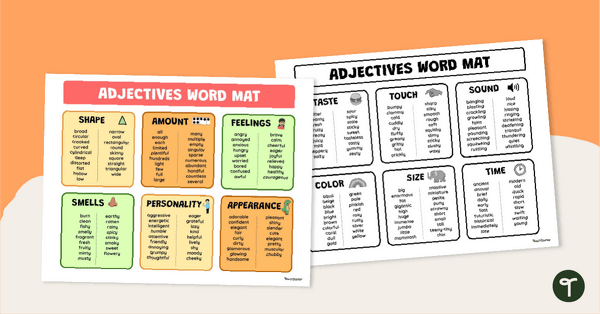
Common Adjectives for Kids - Printable Adjective List
Print your students a list of adjectives to keep at hand when writing to help them use descriptive language.
- Plus Plan
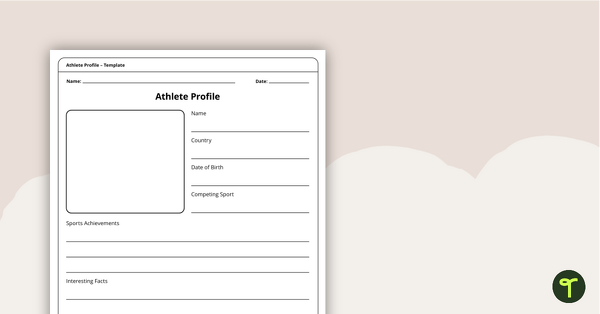
Athlete Profile Template
A worksheet to use in the classroom when writing athlete profiles.
- Free Plan
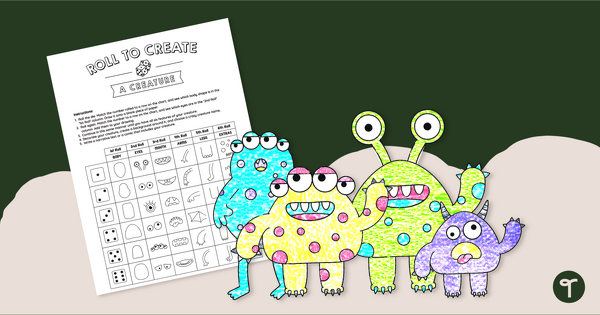
Roll to Create a Creature - Drawing Game
Use a die and a chart to create a creature to include in a narrative text or a comic strip.
- Plus Plan
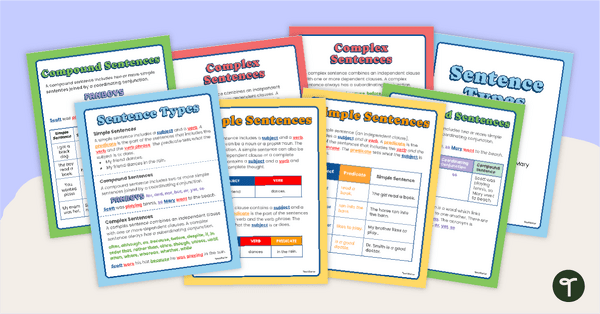
Simple, Compound, and Complex Sentences Poster Pack
Display and use these handy anchor charts to teach your students about simple, compound, and complex sentences.
- Free Plan
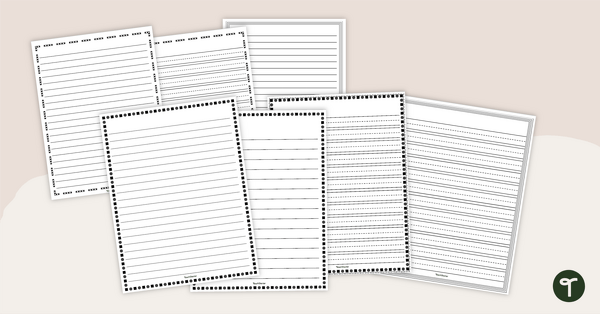
Free Printable Lined Paper Templates
Use this free printable lined paper pack to encourage students to write and publish their work in your classroom writing station.
- Free Plan

Free ABC Tracing Sheet Bundle Pack
Use ABC Tracing Worksheets to help your students develop their handwriting and fine motor skills.
- Free Plan
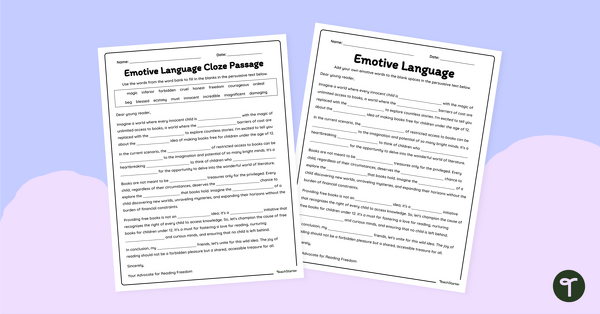
Emotive Language Cloze Passage Worksheet
Get students using emotive language examples in their persuasive essays with this differentiated cloze passage worksheet.
- Free Plan

Sensory Chart Graphic Organizer
A graphic organizer for students to use when categorizing sensory details.
- Plus Plan

Writing Paper with Picture Box - Differentiated Templates
Help your students organize and display their writing and artwork using printable writing paper with picture boxes,
- Free Plan
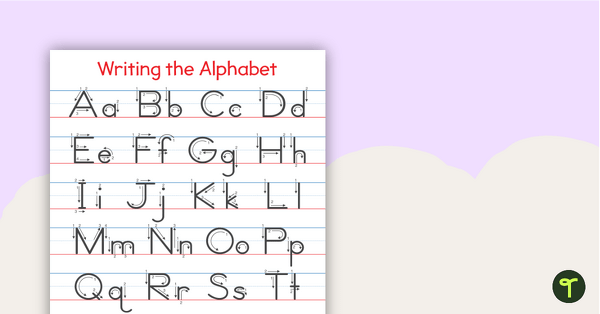
Writing the Alphabet - Handwriting Poster
A poster to assist students when learning how to form letters.
- Plus Plan
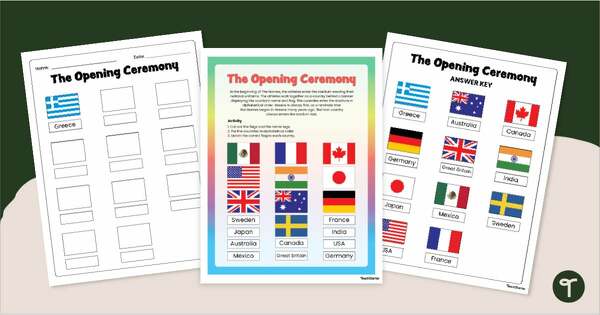
The Opening Ceremony - ABC Order Sequencing Activity
A sequencing activity using the names and flags of countries from the Olympics.
- Plus Plan
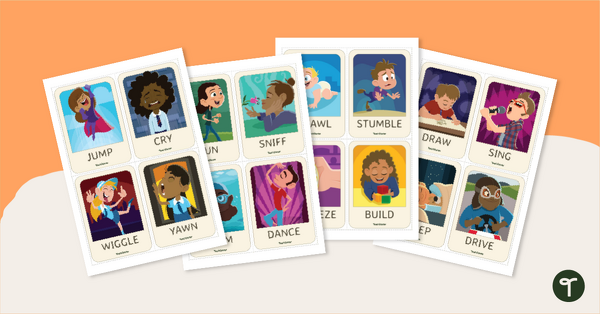
Verb Charades Active Game
Practice action verbs with this fun active charades game!
- Free Plan

Paired Passage Worksheets-Mammals vs. Reptiles
Compare mammals vs. reptiles and add to your reading instruction with leveled nonfiction, compare and contrast passages, and worksheets.
- Free Plan
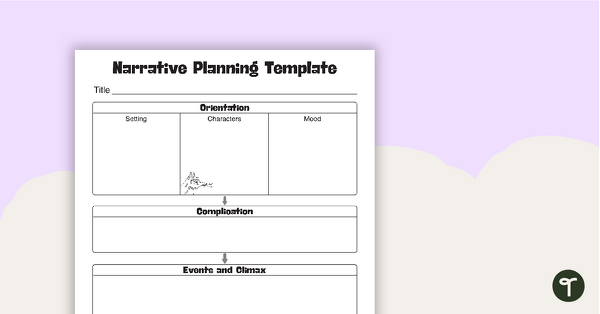
Narrative Writing Planning Template
A template for students to use when planning a narrative text.
- Free Plan
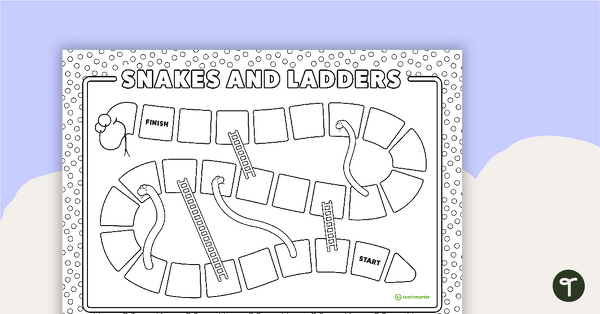
Snakes and Ladders Game Board Template
Create a fun activity for any subject area with this black-and-white board game template.
- Plus Plan
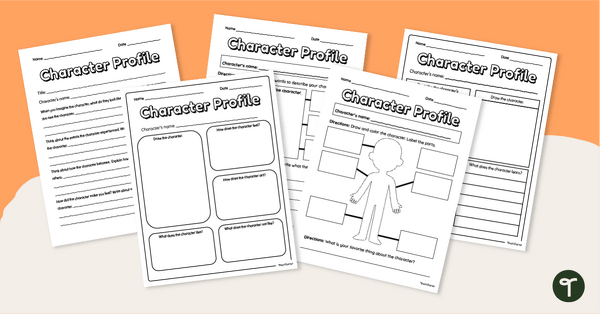
Character Profile Template Pack
Explore the personality, appearance, feelings and actions of a character with printable character profile templates.
- Free Plan
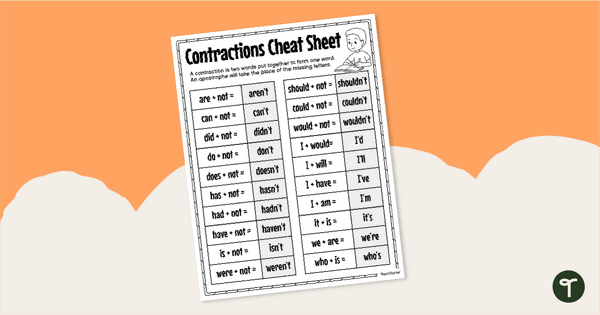
Free Contractions Student Reference Sheet
Help students remember the different contractions with this contraction student reference sheet.
- Free Plan

Color by Parts of Speech Chameleon Worksheet (Nouns, Verbs, Adjectives, Adverbs, Conjunctions and Pronouns)
Practice identifying different parts of speech with this fun color-by-code worksheet.
- Free Plan
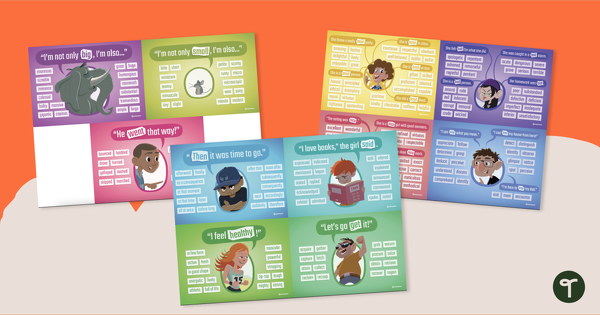
Synonyms- Printable Flashcards
Build vocabulary skills with individual Synonym anchor chart flash cards.
- Free Plan
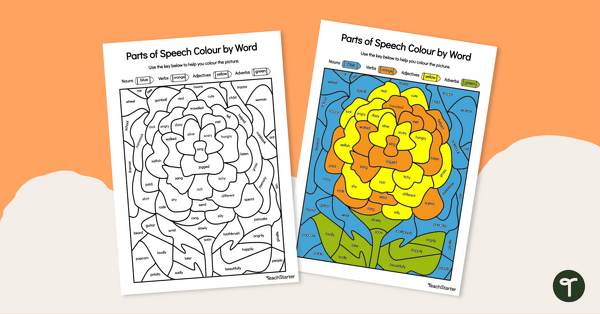
Fall Color By Part of Speech Worksheet - Nouns, Verbs, Adjectives, Adverbs
Use this color by part of speech worksheet as a fun fall activity with your students.
- Free Plan
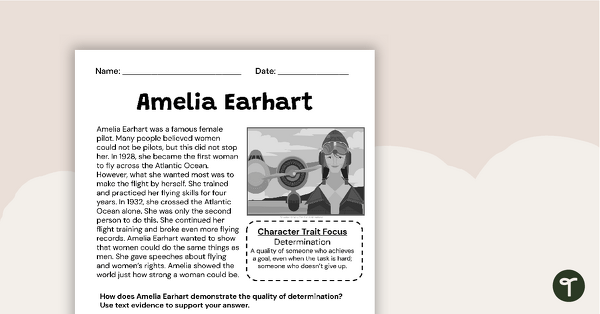
Amelia Earhart Constructed Response Worksheet
Use this passage, second grade writing prompt, and worksheet to help students write a constructed response paragraph about Amelia Earhart.
- Free Plan
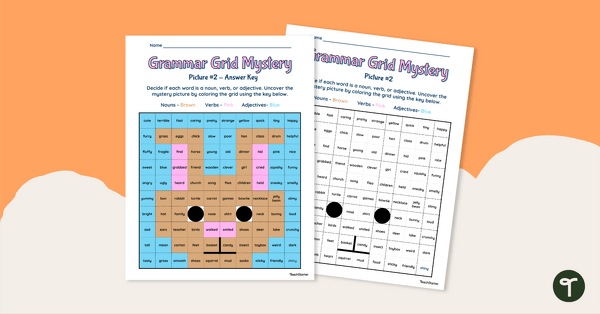
Grammar Grid Mystery Picture Worksheet- Nouns, Verbs, Adjectives (Bunny)
Follow the color-coded parts of speech guide to fill in the word grid and reveal a mystery image.
- Free Plan
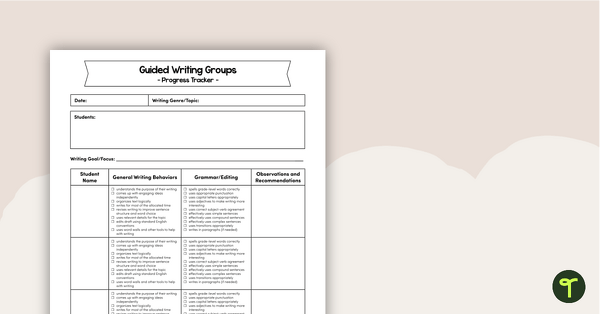
Guided Writing Groups - Progress Tracker
Track student progress during guided writing sessions with this template.
- Plus Plan
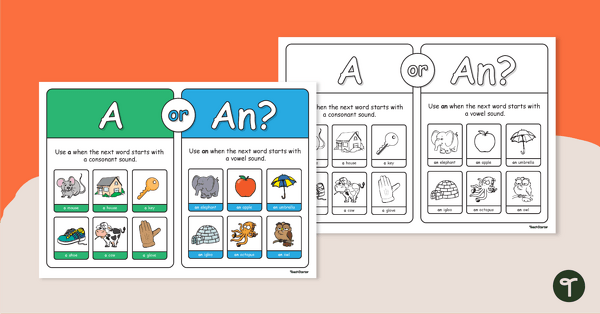
A or An? Poster
Use this articles anchor chart to teach your students which article to use and when!
- Plus Plan
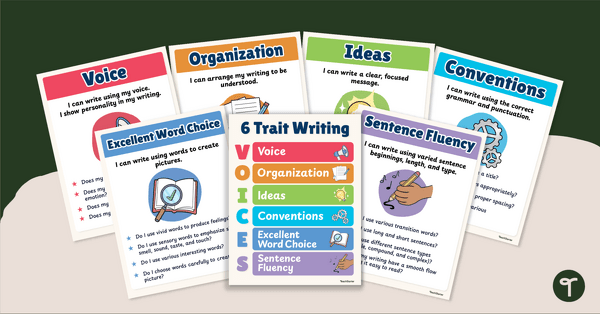
V.O.I.C.E.S. - 6 Traits of Writing Poster Pack
Improve student writing using our V.O.I.C.E.S. 6 Traits of Writing Poster Pack!
- Free Plan
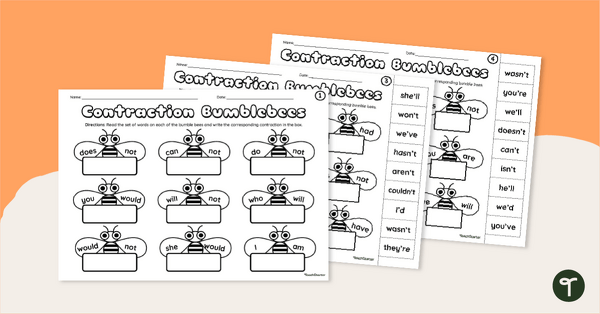
Bumblebee Contraction Worksheets
Practice creating contractions from two words using this set of cute bumblebee worksheets.
- Plus Plan
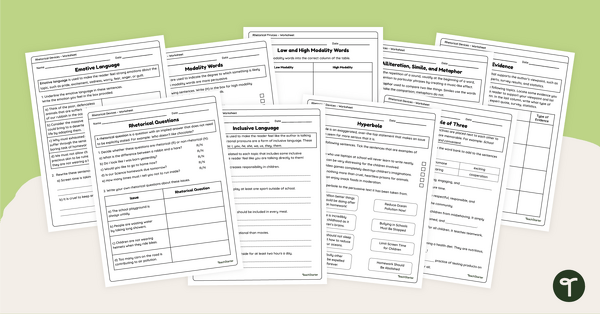
Persuasive Techniques Worksheet Pack
Explore persuasive techniques with your students using this nine-page worksheet pack perfect for your persuasive writing unit.
- Free Plan
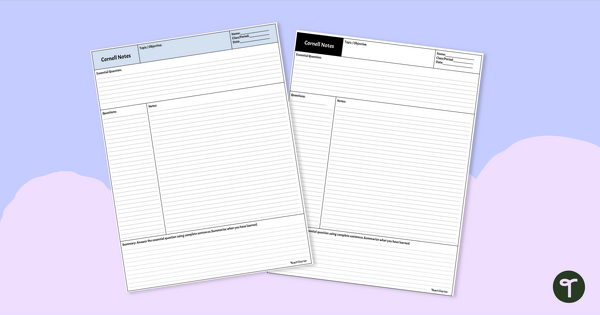
Cornell Notes Template
Help your students organize their notes with a free Cornell Notes Template.
- Free Plan
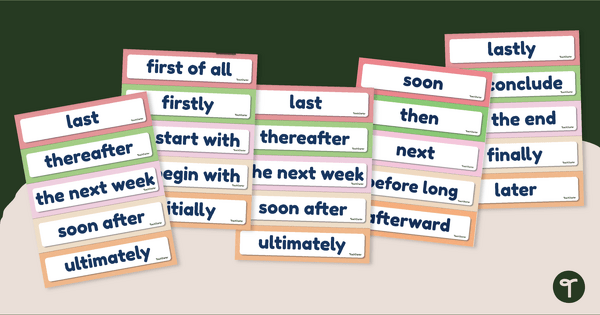
Time Order Words - Transition Words Word Wall
Help your students demonstrate the passage of time in their writing with 35 time-order transition word cards.
- Plus Plan
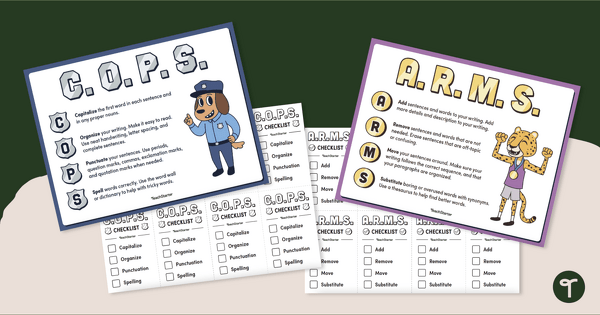
ARMS and COPS Writing and Editing Posters and Checklists
Encourage your students to proofread and edit their writing using the C.O.P.S. and A.R.M.S acronym with a pair of printable writing anchor charts.
- Plus Plan
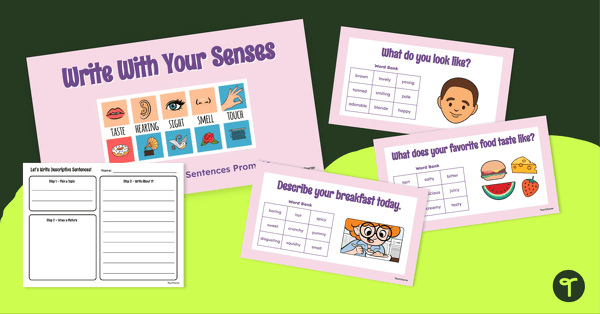
Write With Your Senses: Daily Descriptive Writing Prompts
Inspire your students to write descriptively using our 20 daily descriptive writing prompts slide deck and graphic organizer.
- Free Plan
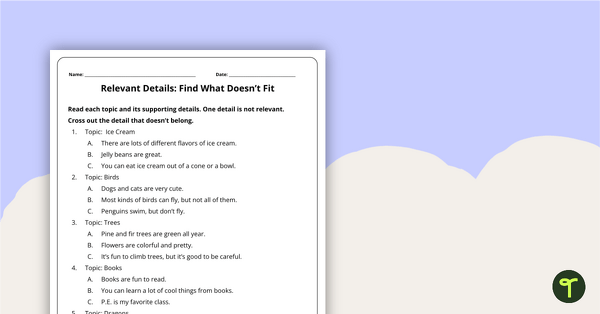
Find What Doesn’t Fit: Relevant Details Worksheet
Practice determining what details are relevant and irrelevant to a topic while providing a purposeful context.